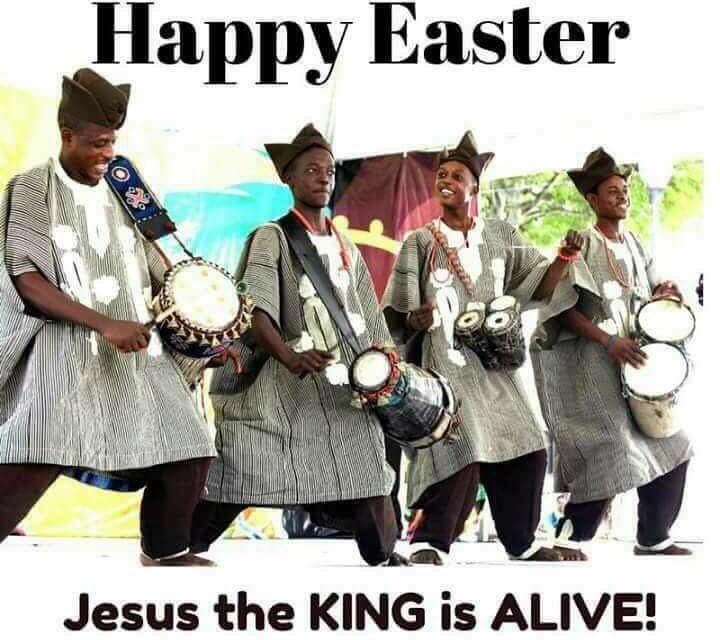Glory be to God in highest and thanks to you for joining me on 2022 Lent for Everyone through Journey with Jesus. Each week of the Lent was built upon a scriptural metaphor or title for Jesus Christ. The better way to round up the reflection is to look at the overall metaphor of Easter to help the church rebound from decline. Despite the deplorable invasion of Ukraine by Russia, there is emergence of new life at this beautiful time of year, brown lawn grass is growing greener, ‘a feeling of hope and renewal.’ The applicable symbolism of Easter in plants and trees that appeared barren some months ago are beginning to shoot up.
The church’s decline is beyond external factors like postmodernity, culture wars, liberal theologians among others. The church’s decline originates from within, the internal mechanism of broken homes and failures of the church to walk in the light of God’s Word. The metaphor of Easter calls us to display missional characteristics that marks Jesus true and deeper followers. The metaphor of Easter is Christlike, challenging and not just acting as an arm of Herod’s state political and economic power.
The Pew Research Centre in their statistics for 2021 from across multiple Christian denominations revealed a decline and decrease n church membership and participation. Long before COVID-19, the decline and ‘death of cultural Christianity’ and a growing indifference and increased mobility remains serious factors for flat or declining attendance for most churches. In all sincerity, in post-COVID-19, as churches around the world reopen, church attendance is further falling off a cliff coupled with increased cost of church building maintenance. The world is also at a time when the Gospel is needed most, but sadly, Gospel appears to be the least interested, hence closure of Christian worship places are on the increase while other religions like Islam are gaining more ground and building. The metaphor of Easter points to the path of the good news blazed by leaders and people like – Jesus, Mary, the disciples who kept moving through all the bad news, betrayal, execution, and falsehood.
Denial of church decline is not a strategy. It is okay for people to deny what they hate but the hatred can lead to a total halt. Metaphor of Easter is about accepting our vulnerability and ignorance just as a Mary initially mistaken Jesus for a gardener at the tomb. Churches are declining and walking inwardly focused; resolutely down the path of death when we have no gospel witness in the community or seen a person come to Jesus Christ in two decades. The metaphor of Easter speaks hope and restoration. The metaphor of Easter tells us that death or decline is not the end in as much as we are humble enough to turn our face – theology, leadership, and worship to Jesus, and forsaken all of our own preferences, pride, fears, sensual desires and human-centred traditions and expressions. The spread of liberation theology- towards a more socially oriented mission was in response to people on the margins, in pains and about the questions of justice and hope. This may focus more on consumer approach of ease and entertainment than on revolution and renewal risks in the metaphor of Easter that are essential to rebound church decline. The metaphor of Easter is about Jesus on the side of the poor and wants every single person to flourish through the proclamation of good news without losing the hope of eternal life. The metaphor of Easter is not about convenience, comfort and cleverness over challenge.
The metaphor of Easter tells us that ‘Easter is all about renewal of life, the celebration of a morning of light, hope, relief, and deliverance after a long night of despair, ignorance, and error. Easter celebrates the greatest of all victories: the triumph of life over death, of reconciliation over estrangement, of freedom over the bondage of sin.’ The metaphor of Easter conveys a feeling of hope and anticipation with the dark days of winter for example to Mary and Jesus’ disciples giving way to the brilliance of spring and the busy time to come of sowing and eventually reaping the bounty of God’s blessings and renewal. The metaphor of Easter points to Easter’s greatest miracle of God’s love by sending His Only Begotten sinless Son as a ransom for our deliverance from sin and eternal death (Jn 3:16)
Easter is “a renewal time” personally, for the family, for the church and the nation in general because of the Saviour’s sacrifice on the cross. The date of Easter may be fluid, the meaning of Easter is not. Easter as a culmination of the 4o days of Lent and the solemn observances of Holy Week teaches us that suffering have meaning. There is beauty in pain and sacrifice. Beyond the church decline, war, banditry, the pain and strife that we see in our society, ‘it can be comforting to believe there is a light at the end of the tunnel and that good will ultimately triumph.’ The metaphor of Easter offers ‘an opportunity for all of us to reflect and contemplate who we are and who we want to be,’ that is, a call to personal and corporate renewal. The metaphor of Easter reminds us of two main characters in the Easter story, that is a pilgrim and a tourist. The metaphor of Easter defines a pilgrim as one on eternal journey with Jesus and others. Mary is a good example. A tourist in the context of the metaphor of Easter is one on earthly journey with Jesus and others but based on his or her self-designed itinerary and with personal happiness and pleasure as the ultimate goal. Judas is a good example. While the likes of Judas declines the church, the likes of Mary grows the church.
The metaphor of Easter calls for a moment of personal and corporate reflection in other to be filled with new hope and a sense of rebirth that will lead you and me to move ahead with a greater sense of purpose in preparation for the Second Coming of Christ. The metaphor of Easter warns against going back to our upper room of liberality, comfort and pleasure to do all the things we used to do and gave up for the past 40 days. The metaphor of Easter and its message of renewal are necessary for churches to rebound from decline. The metaphor of Easter warns us that, it is a powerless and useless preaching that denies Jesus’ resurrection and the promise of His Second Coming.











Recent Comments